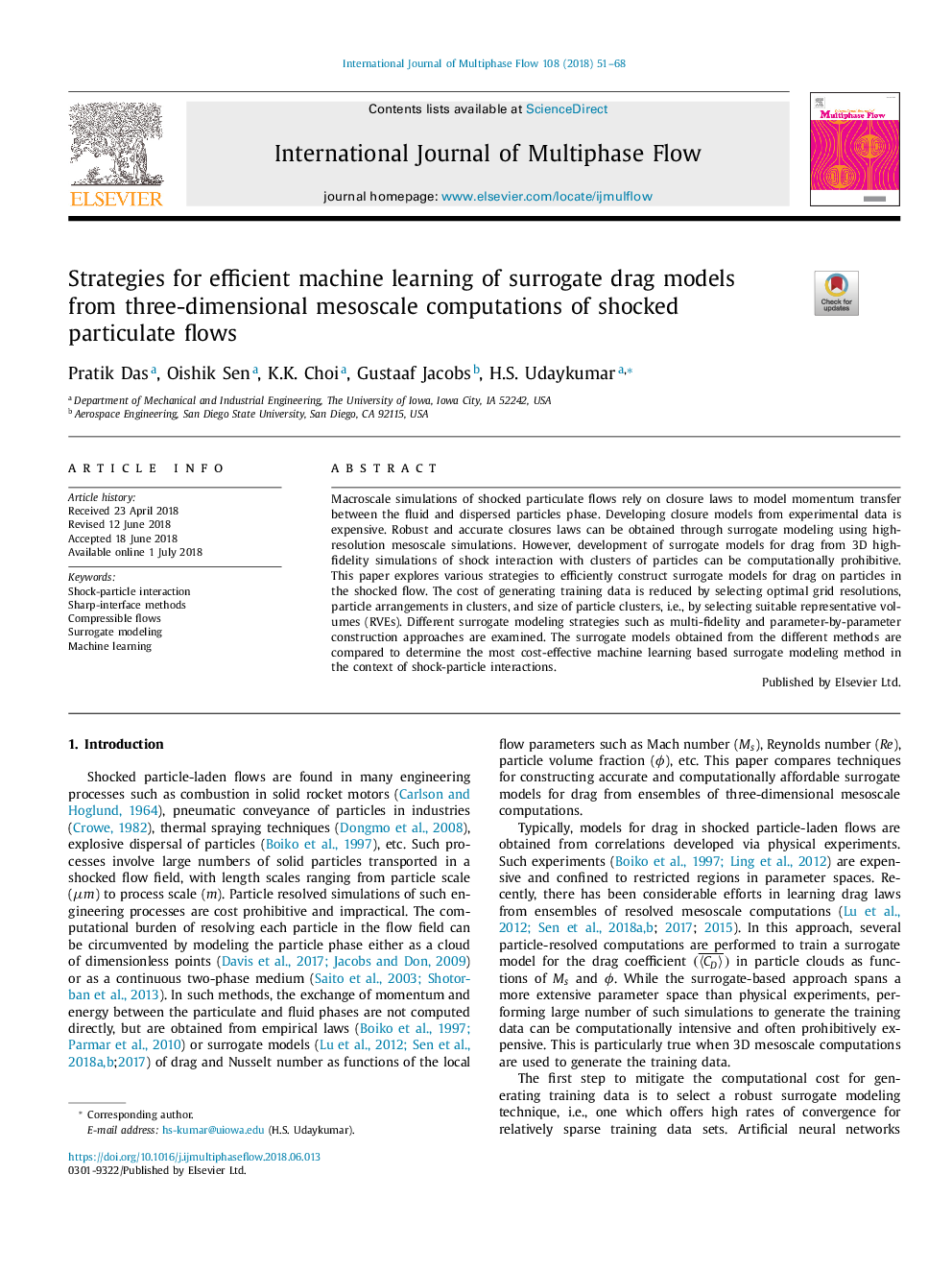| Article ID | Journal | Published Year | Pages | File Type |
|---|---|---|---|---|
| 10152031 | International Journal of Multiphase Flow | 2018 | 18 Pages |
Abstract
Macroscale simulations of shocked particulate flows rely on closure laws to model momentum transfer between the fluid and dispersed particles phase. Developing closure models from experimental data is expensive. Robust and accurate closures laws can be obtained through surrogate modeling using high-resolution mesoscale simulations. However, development of surrogate models for drag from 3D high-fidelity simulations of shock interaction with clusters of particles can be computationally prohibitive. This paper explores various strategies to efficiently construct surrogate models for drag on particles in the shocked flow. The cost of generating training data is reduced by selecting optimal grid resolutions, particle arrangements in clusters, and size of particle clusters, i.e., by selecting suitable representative volumes (RVEs). Different surrogate modeling strategies such as multi-fidelity and parameter-by-parameter construction approaches are examined. The surrogate models obtained from the different methods are compared to determine the most cost-effective machine learning based surrogate modeling method in the context of shock-particle interactions.
Related Topics
Physical Sciences and Engineering
Chemical Engineering
Fluid Flow and Transfer Processes
Authors
Pratik Das, Oishik Sen, K.K. Choi, Gustaaf Jacobs, H.S. Udaykumar,
